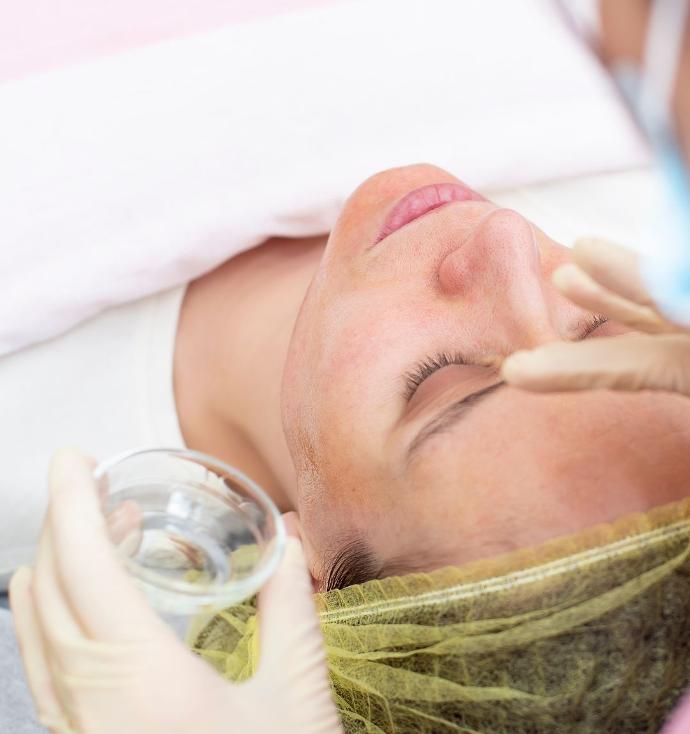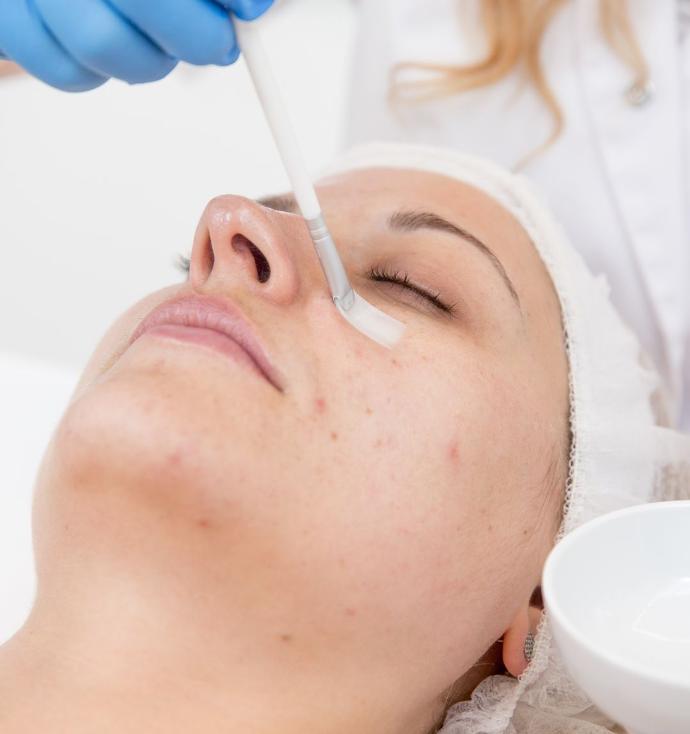Q. WHAT IS A CHEMICAL PEEL?
A chemical peel is a popular
skincare treatment designed to improve skin texture and appearance. It involves
the application of a chemical solution to the face, neck, or hands, which
exfoliates the outer layer of skin. By removing dead skin cells and stimulating
collagen production, chemical peels can help reduce fine lines, sun damage, and
acne scars, revealing a smoother and more radiant complexion.
Q. HOW DOES A CHEMICAL PEEL WORK?
Chemical peels work by utilizing carefully selected acids or chemical agents,
such as alpha hydroxy acids (AHAs) or beta hydroxy acids (BHAs), to break down
the bonds between old skin cells. This controlled exfoliation process
encourages the shedding of damaged skin, prompting the body to generate new,
healthier skin cells. As a result, imperfections and irregularities on the
skin's surface are reduced, promoting a fresher and more youthful appearance.
Q. WHAT SKIN CONCERNS DOES A CHEMICAL PEEL ADDRESS?
Chemical peels are versatile and can effectively address
a range of common skin concerns. They can target fine lines, wrinkles, age
spots, sun damage, hyperpigmentation, acne scars, and uneven skin tone.
Additionally, chemical peels can help improve skin texture and minimize the
appearance of pores, leaving you with a revitalized and more even complexion.
Q. ARE CHEMICAL PEELS SAFE?
While chemical peels are generally safe, the suitability for
specific skin types may vary. Individuals with fair, medium, or dark skin can
benefit from chemical peels, but the type and strength of the peel should be
carefully selected based on skin sensitivity. Those with certain skin
conditions or hypersensitivities should consult a qualified dermatologist
before undergoing the treatment to ensure safety and efficacy.
Q. WHAT ARE THE VARIOUS CHEMICAL PEEL TYPES?
There are various types of chemical peels, ranging
from mild to deep, each targeting different skin concerns. Superficial peels
are gentle and primarily exfoliate the outermost layer of skin, while medium
and deep peels penetrate deeper to address more severe skin issues. Popular
chemical peel ingredients include glycolic acid, salicylic acid, lactic acid,
and trichloroacetic acid (TCA), with each offering specific benefits.
Q. WHAT SHOULD I EXPECT FROM AT THE TREATMENT
During a chemical peel session, a skincare professional
will cleanse the skin and apply the chosen chemical solution. You may
experience a tingling or mild burning sensation during the treatment, which
typically lasts for a few minutes. After the peel, the treated area may appear
red and feel slightly sensitive. Following post-treatment instructions and
avoiding sun exposure are essential for optimal results and faster recovery.
Q. HOW OFTEN SHOULD I HAVE A CHEMICAL PEEL?
The frequency of chemical peels depends on the type of peel and
individual skin goals. Superficial peels can be repeated every two to five
weeks, while medium to deep peels require more extended intervals. Our skincare professionals will help determine
the appropriate treatment schedule based on your specific skin concerns and
desired outcomes.






